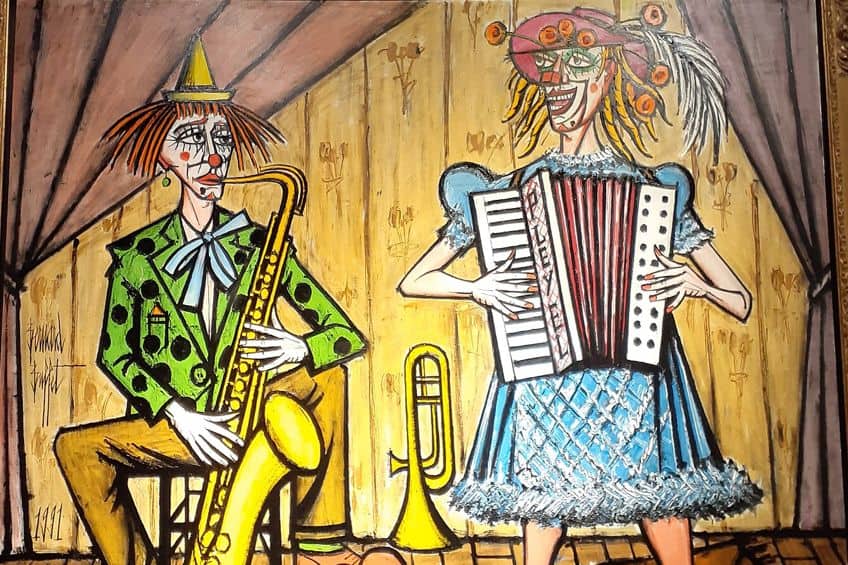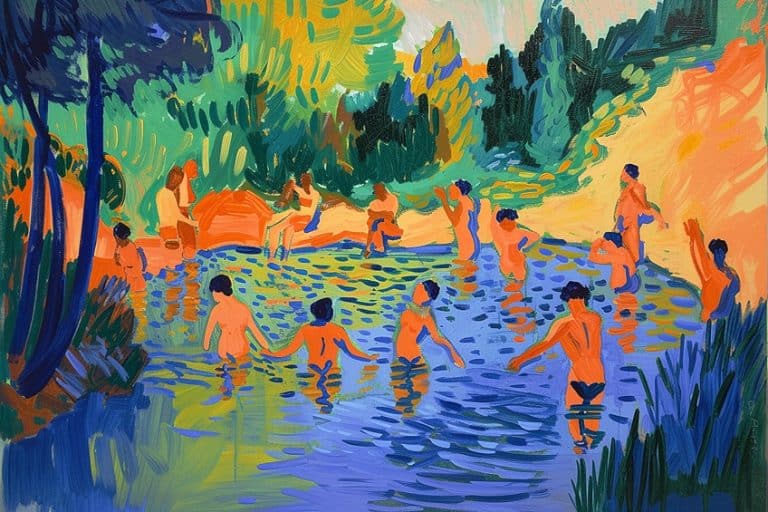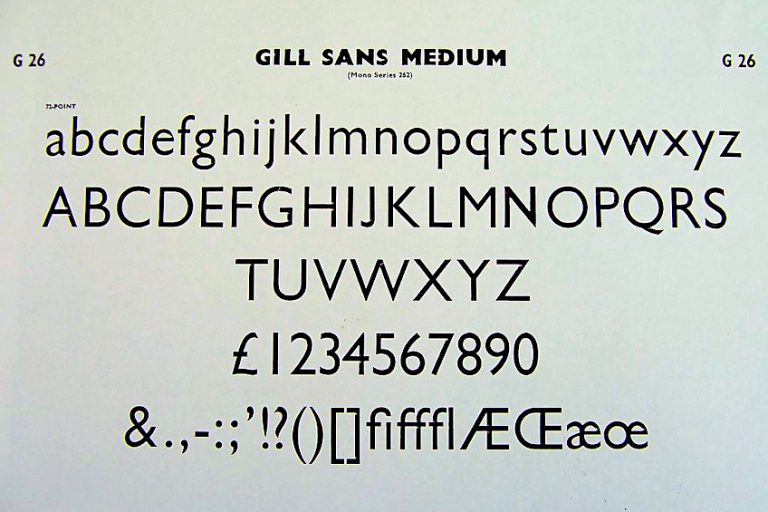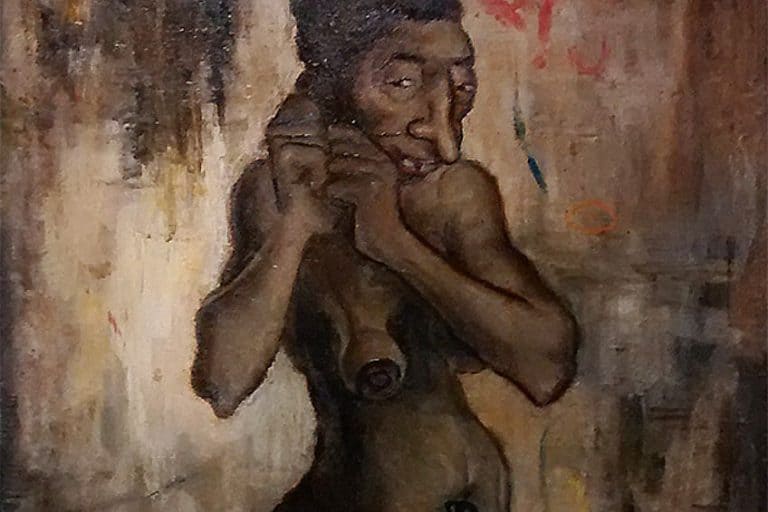Bernard Buffet – Discover the Modern French Expressionist
Bernard Buffet was a painter who worked in the French Expressionist style. Bernard Buffet’s paintings are usually realistic, graphic, and important in their compositions, and he is well renowned for his representational work. Bernard Buffet, an outspoken opponent of abstract art, was a member of the anti-abstraction organization, L’homme Témoin, which campaigned strongly for the value of representational art at a period when abstraction started dominating the critical debate. Let’s find out more about Bernard Buffet’s biography and art below.
Table of Contents
Bernard Buffet’s Biography
| Artist Name | Bernard Buffet |
| Nationality | French |
| Date of Birth | 10 July 1928 |
| Date of Death | 4 October 1999 |
| Place of Birth | Paris, France |
His work centered on death, art history, popular culture, sexuality, and politics, with many allusions to current events and artists. Buffet had a productive career, completing over 8,000 pieces and gaining broad recognition and accolades, including dozens of international exhibits and honors. He created a diverse and substantial collection of work. His work was entirely figurative. The artist was popular all over the world early in his career but was subsequently despised by art critics. There is presently a renewed surge of interest in Bernard Buffet’s art once again.
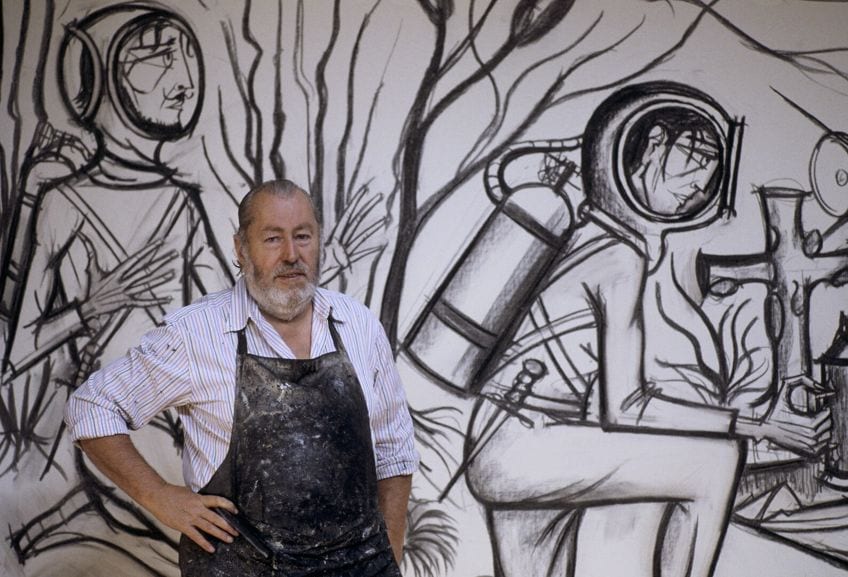
Early Years
Bernard Buffet was born in 1928. He was born into a middle-class family with ancestors from Western and Northern France. His boyhood was spent in Paris and his mother regularly accompanied him to the Louvre Museum, where he became acquainted with the artwork of Realist artists like Gustave Courbet. This is most likely what impacted his style. In 1955, he created a piece inspired by Courbet’s Le Sommeil. During the Nazi occupation of Paris, he was a student at the Lycée Carnot. Ignoring the Nazi authorities’ curfew, he went to art classes at night. Buffet subsequently pursued art at the École Nationale Supérieure des Beaux-Arts while working in Eugène Narbonne, the painter’s studio. Bernard Buffet encountered and was impressed by the artwork of French artist Marie-Thérèse Auffray.
Blanche Buffet, Buffet’s mother, died of breast cancer in 1945, leaving 17-year-old Buffet distraught. Losing his mother at a young age was a source of sorrow for him throughout his life.
Career
Buffet was supported by Maurice Garnier, a dealer, who created religious works, portraits, landscapes, and still lives. His debut artwork, a self-portrait, was presented at the Salon des Moins de Trente Ans at the Galerie Beaux-Arts in 1946. Every year, he had at least one significant exhibition. He created the illustrations for Comte de Lautréamont’s Les Chants de Maldoror in 1952. In 1955, he was given the Journal Connaissance des Arts’ first prize for the 10 finest postwar painters. At 30 years of age, he had his first retrospective at the Galerie Charpentier in 1958. Buffet’s live-in boyfriend was Pierre Bergé, who left Buffet for Yves Saint Laurent.
Bernard Buffet married actress and writer Annabel Schwob on the 12th of December, 1958. They adopted three children, Danielle, Virginie, and Nicolas were born in 1962, 1963, and 1973, respectively. In 1973 Bernard Buffet received the title “Chevalier de la Légion d’Honneur”. Kiichiro Okano established the Bernard Buffet Museum in Surugadaira, Japan, on the 23rd of November, 1973. In 1978, he drew a stamp picturing the Institut et le Pont des Arts at the French postal administration’s request; on this occasion, the Post Museum hosted an exhibition of his artwork.
Bernard Buffet produced around 8,000 paintings and Bernard Buffet’s lithographs were also popular. Buffet committed suicide on the 4th of October, 1999, at his house in Tourtour, southern France. Bernard Buffet was disabled by Parkinson’s disease and could no longer work. He died at 4 p.m. after putting a plastic bag around his neck and taking it closed, according to police. In the 1950s and 1960s, the enduring appeal of Buffet’s art, as well as the amount of attention from the media regarding his lifestyle, were quite substantial.
While he continued to produce art throughout his life, there was a drop in interest in his work in the final years of the 20th century, particularly in France.
His fall from favor with French art critics, whose backing and focus switched away from realistic painting, contributed to his decrease in popularity. In the 21st century, there has been a fresh surge of interest in Bernard Buffet’s art, with a number of successful shows held in France and across the world.
Legacy
Today, we may look at his work with fresh eyes and see a distinct quality in the combination of existential issues with a formulaic and conventional painting style: Bernard Buffet was one of the first successful artists to catch the attention of big public audiences through the brand awareness of his work and developed the pop-star artist’s public image. Understanding his drawings requires familiarity with existentialist theory, but they deserve to be understood as more than just depictions of concepts. Instead, his paintings and public appearances provide evidence of a fast-paced society in which confession and convention, beauty, and pop coexisted in an unusual way.
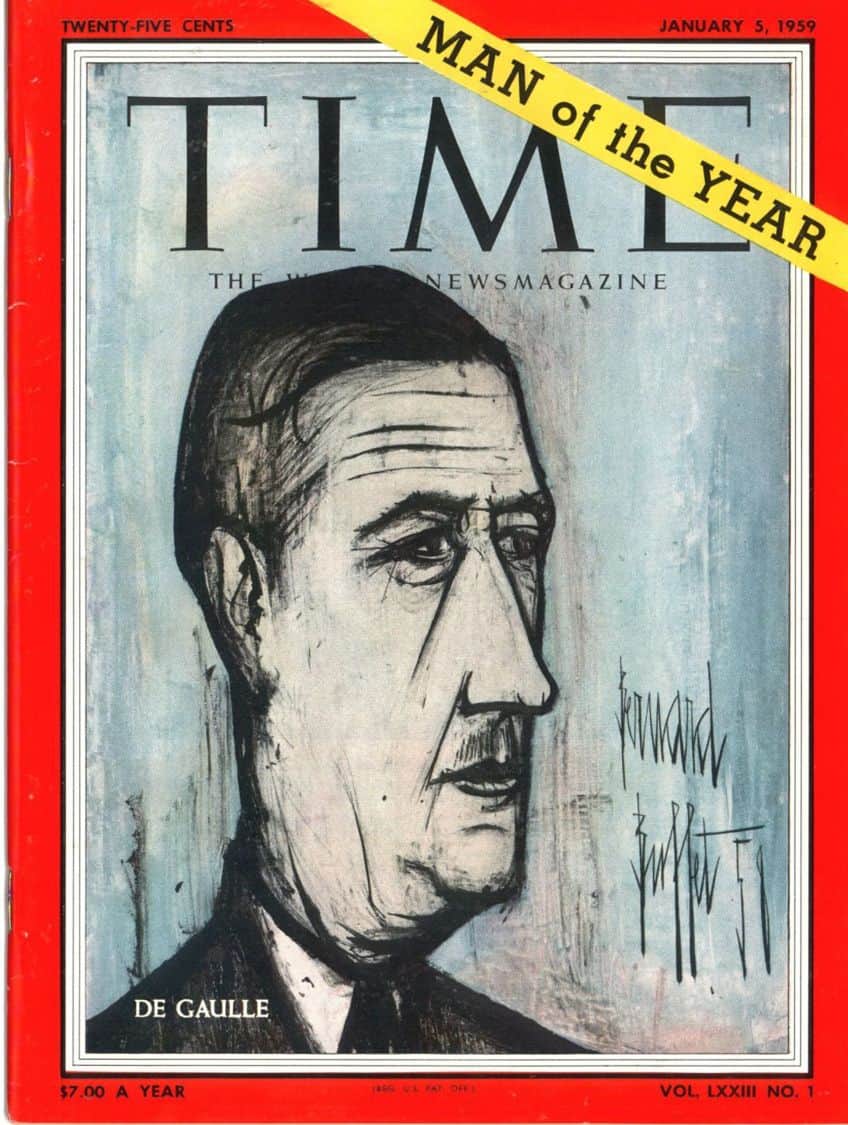
Death, starvation, and hatred are important themes in Buffet’s austere still lives and portraits of gaunt and pale humans. He created an easily identifiable personal figurative style in order to depict the tristesse of post-wartime Paris. Bernard Buffet built a name for himself in the art world thanks to his captivating public demeanor, astute marketing, and partnership with Pierre Bergé, a gallery owner who was also his partner at the time. Leading Parisian collectors and art dealers saw him as the postwar Picasso. The yellow press covered his life and work extensively, and his mansions were featured in tales richly illustrated with images.
Bernard Buffet’s Art
Bernard Buffet’s art is distinguished by its stark and solemn imagery, which depicts lonely people, still lives, and landscapes. His paintings are distinguished by bold, black contours, flat expanses of color, and an emphasis on geometric patterns. Buffet’s work is often associated with “Tachisme”, or “L’Art Informel” an art movement that originated in Europe in the 1950s and centered on abstract and expressive gestures. The clown is one of Bernard Buffet’s most recognizable themes, which he represented in various stages of sorrow and solitude. These clown paintings were some of his most famous and well-known works.
Bernard Buffet’s paintings frequently portrayed a feeling of emotional intensity and existentialism, mirroring France’s post-war environment. Death, starvation, and hatred are important themes in Buffet’s austere still lives and portraits of gaunt and pale humans. He created an easily identifiable personal figurative style in order to depict the tristesse of post-wartime Paris. Buffet built a name for himself in the art world thanks to his captivating public demeanor, astute marketing, and partnership with Pierre Bergé, a gallery owner who was also his partner at the time.
Leading Parisian collectors and art dealers saw him as the postwar Picasso.
The yellow press covered his life and work extensively, and his mansions were featured in tales richly illustrated with images. The young artist’s stratospheric popularity quickly made him extremely wealthy. Still, in his 20s, he was a recognized pop-star musician and a part of France’s high society, alongside Françoise Sagan, Brigitte Bardot, Yves Saint Laurent, Roger Vadim, and others. But the explosion surrounding him quickly died away. His art was now seen as tacky and vapid. The artist who painted about sorrow while posing for photos in front of his opulent mansions was no longer taken very seriously.
Throughout his career, Bernard Buffet’s paintings addressed a wide range of sentiments and subjects. Bernard Buffet’s lithographs and paintings often depicted lone characters, typically with an impression of loneliness. These works represented postwar France’s existentialist mindset. Buffet’s figures, such as his clowns or even his self-portraits, seemed disconnected from their surroundings, implying alienation and inner conflict. Bernard Buffet’s paintings usually conveyed a depressing and melancholy tone. His use of dark colors, strong brushstrokes, and harsh compositions expressed an intensity of emotion and displayed the human condition in states of misery, suffering, and sadness.
Buffet’s work incorporated social criticism and critiques of modern society on occasion. He examined topics like greed, consumerism, and the dehumanizing impacts of urbanization. Buffet’s depictions of the human form emphasized the hardships and ambiguities of modern existence. Bernard Buffet’s artworks were often hauntingly beautiful, despite their miserable subject matter. His capacity to discover beauty amid misery and devastation displayed a great understanding of the human experience. Buffet’s somber color choice and meticulous technique generated a unique aesthetic impact and sense of contemplation. Bernard Buffet’s particular style, defined by sharp edges and expanses of flat color, gave his work a feeling of significant graphic impact. His models’ reduced outlines and accentuated features heightened their emotional expression and created a feeling of urgency and rawness.
Critical Reception
Bernard Buffet’s artwork has received mixed reviews from art critics and historians throughout the years, attracting both acclaim and criticism. Buffet garnered widespread appreciation and recognition for his own approach early in his career. He started to rise to prominence in the 1950s and was regarded as a pivotal member of the School of Paris. His work was praised at the time for its profound emotional effect, technical mastery, and ability to portray the postwar existentialist setting.
Bernard Buffet’s work was a huge financial success, with his artwork fetching high prices and garnering a large audience.
His distinctive clown paintings, particularly, were extremely popular. While Bernard Buffet’s commercial success brought advantages in terms of money, it also drew criticism from certain art critics, who saw his work as unduly commercialized as well as lacking any real artistic integrity. Buffet’s realistic technique went out of favor with many reviewers as the art world transitioned towards abstract and conceptual art in the 1960s and beyond.

Many criticized his prodigious output and economic success as damaging to his artistic growth, claiming that his creations were tedious and lacked originality. Bernard Buffet’s reputation suffered as a result of the idea that his work was anchored in a bygone age and did not align with modern aesthetic trends. Bernard Buffet’s artwork has been reevaluated in recent years, with a newfound respect for the contributions he made to the art world. This reappraisal has resulted in exhibits and retrospectives devoted to his work, emphasizing its relevance in the context of mid-century art.
Bernard Buffet was just 16 years old when he joined a municipal art program. He continued his education at Beaux-Arts for two years, before creating his own art without any regard for genre or trend. He initially presented some of his artwork alongside other artists in 1946, and afterward, he took part in numerous events such as Artistes Indépendants, Salon d’Automne, and Peintres Témoins de leur Temps. He soon drew the attention of the general public. Everyone, both connoisseurs and the general public, recognizes Buffet’s artwork, whether in his paintings, sketches, or an infamous Bernard Buffet lithograph. Despite widespread fame, Bernard Buffet was never able to persuade all of his fellow artists of his talents.
Take a look at our Bernard Buffet paintings webstory here!
Frequently Asked Questions
Who Was Bernard Buffet?
Bernard Buffet was a painter who was educated at the École des Beaux-Arts in Paris, and achieved early critical recognition and riches due to his prodigious production. Bernard Buffet painted over 8,000 pieces in his career and established an instantly recognizable aesthetic manner. Bernard Buffet championed representational artwork and was an active member of the anti-abstraction organization, L’homme Témoin, during a period when abstraction was the prevalent creative trend.
What Is Unique About Bernard Buffet’s Art?
Bernard Buffet’s work is predominantly graphic, with angular, spiky, and elongated shapes presented in a somber color palette, and includes townscapes, portraiture, still lifes, religious, and historical topics. This aesthetic form lends his work a stark and melancholy tone, which has been understood as a depiction of the postwar generation’s emotional state. Buffet had dozens of worldwide exhibits and received a lot of major honors. Sadly, the conclusion of his life was marked by a protracted fight with Parkinson’s disease, which concluded in the artist’s suicide on the 4th of October, 1999, at the age of 71.
Isabella studied at the University of Cape Town in South Africa and graduated with a Bachelor of Arts majoring in English Literature & Language and Psychology. Throughout her undergraduate years, she took Art History as an additional subject and absolutely loved it. Building on from her art history knowledge that began in high school, art has always been a particular area of fascination for her. From learning about artworks previously unknown to her, or sharpening her existing understanding of specific works, the ability to continue learning within this interesting sphere excites her greatly.
Her focal points of interest in art history encompass profiling specific artists and art movements, as it is these areas where she is able to really dig deep into the rich narrative of the art world. Additionally, she particularly enjoys exploring the different artistic styles of the 20th century, as well as the important impact that female artists have had on the development of art history.
Learn more about Isabella Meyer and the Art in Context Team.
Cite this Article
Isabella, Meyer, “Bernard Buffet – Discover the Modern French Expressionist.” Art in Context. August 29, 2023. URL: https://artincontext.org/bernard-buffet/
Meyer, I. (2023, 29 August). Bernard Buffet – Discover the Modern French Expressionist. Art in Context. https://artincontext.org/bernard-buffet/
Meyer, Isabella. “Bernard Buffet – Discover the Modern French Expressionist.” Art in Context, August 29, 2023. https://artincontext.org/bernard-buffet/.


